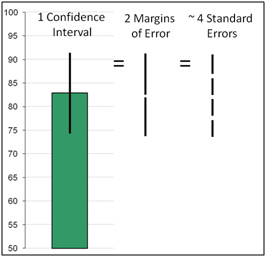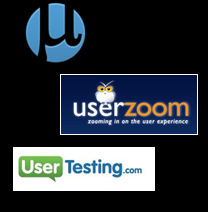Topics
Topics

20 Tips for your Next Moderated Usability Test
Despite the rise in unmoderated usability testing, the bulk of evaluations are still done with a facilitator. Whether you are sitting next to the user in a lab or sharing screens with someone thousands of miles away, here are 20 practical tips for your next moderated usability test. Shut up and listen: You need to

10 Things to Know about Card Sorting
Here are at least 10 things to know about using this popular user research method. Card Sorting involves having users (not designers, developers or VP’s) sort a list of pages or categories together based on their understanding of the structure and relationship.Card sorting is useful for such things as finding out how users would group

8 Advantages of Standardized Usability Questionnaires
In a usability evaluation it’s good practice to measure both how users perform on realistic tasks and what they think about the usability of the interface. But what exactly DO you ask the users? “Is this usable?” … “Is the interface easy to use?” … “Did you like using the app?” While you can cobble

10 Things to know about Confidence Intervals
You don’t need a PhD in statistics to understand and use confidence intervals. Because we almost always sample a fraction of the users from a larger population, there is uncertainty in our estimates. Confidence intervals are an excellent way of understanding the role of sampling error in the averages and percentages that are ubiquitous in

7 S’s of User Research Sampling
You can’t conduct user research without users. But rarely can we talk to all users in the population we’re studying, whether they be consumers, lawyers, doctors or iPhone users. Instead, we need to select a subset of the population and use this sample of users to make general inferences about the unknown total user population.

20 Questions Answered About Unmoderated Usability Testing
If you’ve considered using unmoderated remote usability testing with video here are answers to several questions you might have. On February 28th 2012, I hosted a live webinar sponsored by the folks at Userzoom and Usertesting.com. The topic was best practices for unmoderated usability testing and in it I walked through the results of a

Managing the Right Customer Experience Measure
If you can’t measure the customer experience, you can’t manage it. Improving the customer experience starts with measuring. But you’ve got to be sure you’re getting the right measure (or usually measures) to manage. The right measure will: identify problem areas track improvements over time be meaningful to the customer The wrong measure can: identify

Five Challenges and Pain Points Facing UX Professionals Today
There are more than five challenges facing UX professionals today, but here are five that tend to cross projects and products: Time: You’ve got two weeks to get the next design out. How do you have time to conduct ethnographic research, build personas and conduct a usability test?In many organizations, even a “quick” usability test

The High Cost of Task Failure on Websites
It’s often called web surfing or web browsing, but it probably should be called web doing. While there is still plenty of time to kill using the web, in large part, we’re all trying to get things done. Purchasing, reserving, comparing and communicating—Internet behavior is largely a goal directed activity. If a website doesn’t help

Distrust in Social Networks: Google+, Twitter, Facebook
We spend a lot of time on social networks like Facebook, Twitter and now the newcomer, Google’s Plus (aka Google+). Owning a share of that free time can translate into a lot of money (which the recent Facebook IPO is testament to). Social networks aren’t sterile repositories of faces and connections. They’re more than that.

5 Examples of Quantifying Qualitative Data
There is an erroneous perception in the UX community that if your method is qualitative, then numbers somehow cannot or should not be used. These perceptions come from an informal practice that stems back to the beginning of the usability profession and continues through training programs and some UX experts. Unfortunately, this perception is misguided

Comparison of Usability Testing Methods
There was a time when we spoke of usability testing it meant expensive labs and one-way mirrors. Not anymore. There are three core ways of running usability tests. Each has their advantages and disadvantages. Lab-Based: This is the classic services to usability testing: users physically come to a lab, often with a one-way mirror and